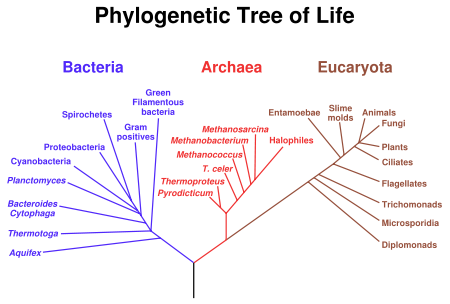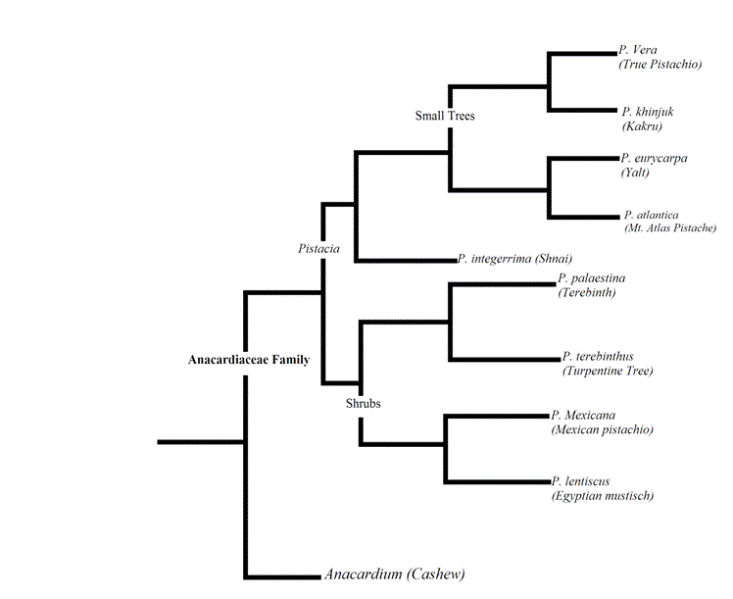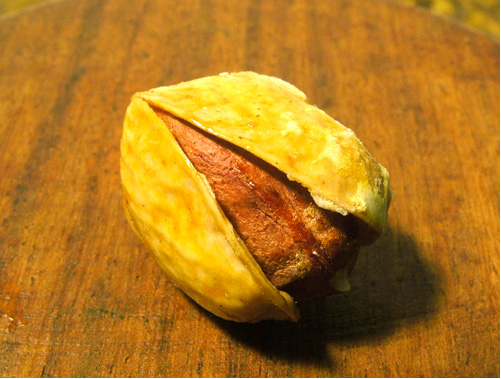What's in a Name?
Scientific Name:
Pistacia vera
Common Name: Pistachio, Green
Almond
The species name Pistacia comes form the Greek word pistake meaning nut. The specific epithet means true, real, and actual. From this it can be observed that pistachio is a “true nut!”
Kingdom – Plantea
Phylum - Anthophyta
Class- Magnoliopsida
Order - Sapindales
Family - Anacardiaceae
Genus - Pistacia
Species – Pistacia vera
Domain:
Pistacia vera is a multicellular, eukaryotic organism.
Kingdom: The tree
contains a cell wall, is non-motile, has chlorophyll and a
chloroplast and therefore belongs to that
plant kingdom.
Phylum: The tree has
a vascular system for water propagation. This plant also fruits in order to
produce the pistachio nut therefore it belongs to the anthophyta
phylum.
Class: Pistacia vera
has compound leaves, a tap root and the nut splits into two
cotyledon so this plant is a eudicot therefore it also belongs
to the magnoliopsida class.
Order: The pistachio
nut is fleshy so it would fall under the order of sapindales.
Family: This tree belongs to the anacardiaceae family because like most members of this family, the pistachio lives in tropical and subtropical climates.
Genus: The
Pistacia genus shares two common characteristics: all the trees
are decidouse and all are
wind pollinated.
Species: The species Pistacia vera is the only “true” pistachio tree. This species was the first and original species of this plants and it has given rise to different tree and shrub species of the Pistacia genus.

Form this polygenetic tree of life it can be observed that plants, such as the pistachio tree, are more closely related to other eukaryotes such as animals and fungi then bacterial species. This tree shows how the pistachio fits in amongst all other living organisms.
The pistachio belongs to the same family as the mango and the cashew. The tree below shows the close relationship between the pistachio and the cashew. This tree also shows how the Pistacia vera relates to some other species of the Pistacia genus

To see where this amazing tree lives and what it looks like go to Habitat and Description

